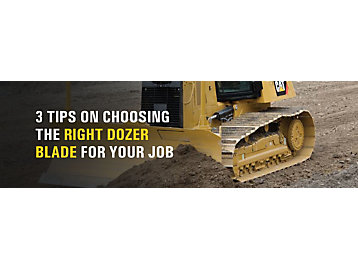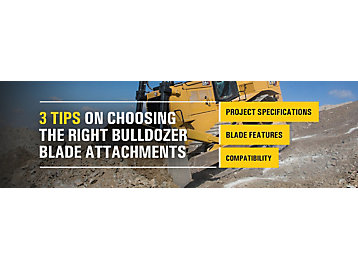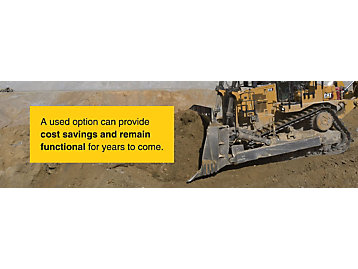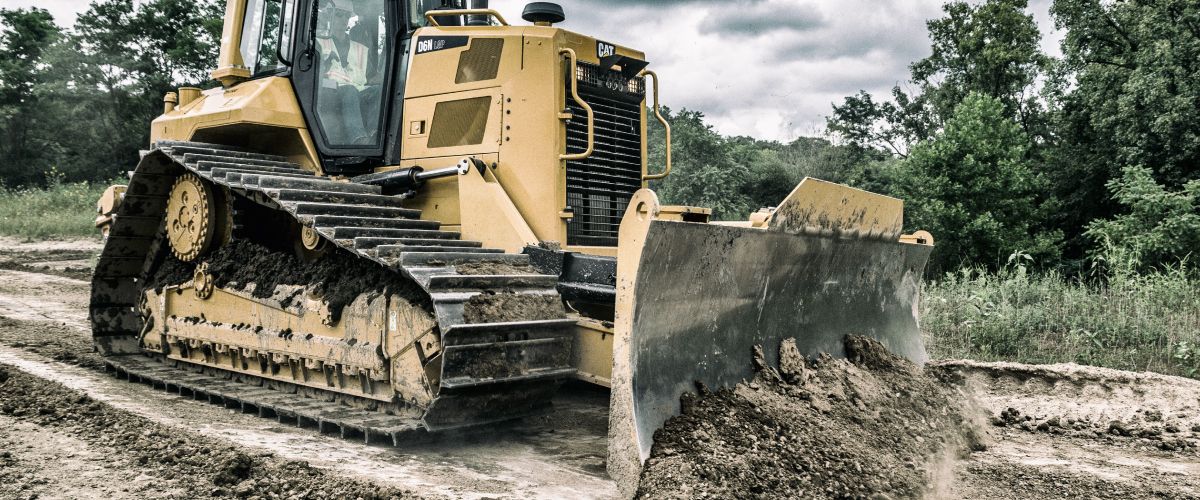

Sign In
Welcome! Sign In to personalize your Cat.com experience
If you already have an existing account with another Cat App, you can use the same account to sign in here
Register Now
One Account. All of Cat.
Your Caterpillar account is the single account you use to log in to select services and applications we offer. Shop for parts and machines online, manage your fleet, go mobile, and more.
Account Information
Site Settings
Security
Author: Small Business Expert | February 26, 2024 | Topic: Used Equipment

Choosing the right dozer blade can have a significant impact on the efficiency of your project. There's more than one type of dozer blade — a blade that works best on hard rock will be a lot different from the one you need for soft soil. The dozer you're using, the nature of the job and the material you're working with will determine the blade you use.
Check out our bulldozer blade buying guide below to learn about the types of dozer blades, how they differ and why one might be more suitable for your job than another.
What Are the Different Types of Dozer Blades?
Each blade type has its strengths and weaknesses. Understanding what each one is capable of will help you narrow down your options. Here are some of the standard types of bulldozer blades on the market:
- S-blades: Straight blades, or S-blades, are the simplest and shortest type. They have a straight edge and no curve or side wings. The straight edge can push soil and complete fine grading and material leveling. It's one of the most common types of blades for bulk earthmoving on construction sites and for landscaping.
- U-blades: Universal blades (U-blades) are large and curved. They have tall side wings to carry more material. This blade's curve and wings allow it to push and spread loose materials over long distances with greater load retention. U-blades are common attachments for work in quarries and mines.
- S-U blades: A semi-universal blade (S-U blade) combines the characteristics of both S-blades and U-blades. You get a curved design with shorter side wings. The result is an attachment that can work with various kinds of materials. However, an S-U blade isn't as robust as a U-blade, so it can push moderate loads.
- Angle blades: You can pivot the angle blade to the left or right to push or cast aside material at an angle. It's handy for tasks like leveling land, backfilling or creating slopes.
3 Tips on Choosing the Right Bulldozer Blade Attachments
Many factors can influence the best blade attachment for your applications. Here are three key tips on choosing the right dozer blade for your project:

1. Project Specifications
The terrain of your job site will influence what type of blade you need. Is there soft soil, or is the ground surface hard and rocky? What materials will you be moving? If you only use your dozer for a specific type of task, such as landscaping, you can choose a more specialized type of blade, like an S-blade. If versatility is key, an S-U blade might be best.
The space you have to work with will also be a determining factor. Make sure the attachment won't be too large to maneuver around the area.
2. Blade Features
You can get adjustable blades that allow you to tackle an array of project tasks. Depending on your project, it may be best to have more than one blade available and rotate them out as your job requirements change. For example, you may need an S-blade and an angle blade to move and carry materials as necessary.
Train your staff to dismantle and attach the blades so the process doesn't lead to excessive downtime. A quick-attach system can enable you to switch different blades frequently.
3. Compatibility
The blade must also be compatible with your bulldozer to prevent strain on the equipment. A blade that's too heavy for your equipment will cause your bulldozer to become “nose heavy.” When it begins to pick up a load, it will cause safety issues for the operator, and your bulldozer will pull forward, potentially damaging the dozer. Only choose blade attachments that are compatible with your dozer.
Should You Buy a New or Used Dozer Blade?
The decision of whether to invest in new or used dozer blades comes down to several factors. Both choices have their benefits. Here are some factors to consider:
- Age of your machine: If your bulldozer is relatively new, a new blade could be the perfect match. However, if you've already gotten a few years of use out of your dozer, selecting a used option may be best. Additionally, a used blade is always a smart investment if you don't plan to use it often.
- Job requirements: Heavy-duty jobs will cause more wear and tear on your blade. Consider whether you need a new blade to help you tackle tough jobs for the long term or if a used option would be a wiser choice for your specific projects. One notable benefit of buying used is enjoying less depreciation.
- Equipment history: Used blades come with use histories that can be helpful when browsing attachments. In many cases, used blades are just as durable as new blades, and you can confirm that by reviewing what maintenance they've gone through in the past.
- Cost: Budget is a concern for most contractors, so consider if investing in a new blade will be worthwhile for your operations. What will your specific return on investment look like? A used option can provide cost savings and remain functional for years to come.

Browse Our Extensive Blade Inventory at Cat® Used
At Cat® Used, we offer a broad range of used bulldozer blades for your bulldozing needs, helping you complete project tasks more efficiently. Each listing provides extensive details about the blade's condition and price, so you can get a complete picture of what we have in stock.
Need help deciding which option is best for your needs? Our knowledgeable dealers can answer your questions and provide expert advice. Contact us today to get started, or visit a Cat dealer near you.



